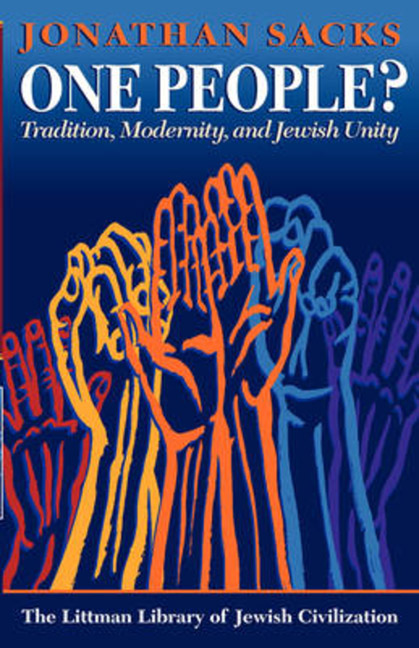Book contents
- Frontmatter
- Dedication
- Preface
- Contents
- Note on Transliteration and Place Names
- Abbreviations
- 1 The Crisis of Contemporary Jewish Thought
- 2 The Birth of the Adjectival Jew
- 3 Orthodoxy, History, and Culture
- 4 Orthodoxy and Jewish Peoplehood
- 5 Tradition and Diversity
- 6 Inclusivism
- 7 A Collision of Consciousness
- 8 Schism?
- 9 The Future of a People
- Bibliography
- Index
4 - Orthodoxy and Jewish Peoplehood
- Frontmatter
- Dedication
- Preface
- Contents
- Note on Transliteration and Place Names
- Abbreviations
- 1 The Crisis of Contemporary Jewish Thought
- 2 The Birth of the Adjectival Jew
- 3 Orthodoxy, History, and Culture
- 4 Orthodoxy and Jewish Peoplehood
- 5 Tradition and Diversity
- 6 Inclusivism
- 7 A Collision of Consciousness
- 8 Schism?
- 9 The Future of a People
- Bibliography
- Index
Summary
Two issues, the historical and cultural dimensions of emancipation, divided Orthodoxy. But have they fragmented it? To answer this we must confront a third dilemma of modernity. It concerns the concept of the covenantal community. In traditional Jewish thought, the bearer of the covenant was keneset yisrael, the Jewish people in its totalitypast, present, and future. The Jewish community was linked not merely by faith but also by birth. It was a biological family. The commands of the Torah were not addressed universally to mankind, nor restrictively to Jews who voluntarily chose the life of faith, but to a particular people. Judaism was therefore particularist in its concept of a chosen people, and at the same time inclusivist in its attitudes towards the members of that people. The Jew who sins remains a Jew.
What was the fate of Jewish peoplehood in modernity? On the one hand Judaism is too deeply predicated on such an idea for it to have been jettisoned by any Orthodox thinker. On the other, the Jewish people was itself disintegrating at an alarming pace, divided into nonOrthodox readings of Judaism as religion, and secular interpretations of Judaism as a national, ethnic, cultural, or political entity. How did Orthodoxy respond to this process? On the first two issues, as we have seen, the great figures of Hungarian and German Orthodoxy, Moses Sofer and Samson Raphael Hirsch, adopted different approaches. On this third issue they took the same approach, while Orthodoxy elsewhere took other directions.
ENGLISH AND FRENCH MODELS OF EMANCIPATION
It is striking, in retrospect, how the great arguments over Orthodoxy were shaped in Germany and Hungary, two communities that were in many respects atypical. It was there, and subsequently in America, that Orthodoxy was forced into self-definition by the presence of a powerful and aggressive Reform movement, whereas Reform made no headway in Eastern Europe and was a relatively marginal factor in the Jewish communities of nineteenth-century France, Italy, and England.
In England, emancipation took place both earlier and more smoothly than in Germany. As early as the end of the eighteenth century, Jews had become considerably integrated into English society.
- Type
- Chapter
- Information
- One People?Tradition, Modernity, and Jewish Unity, pp. 65 - 87Publisher: Liverpool University PressPrint publication year: 1993

